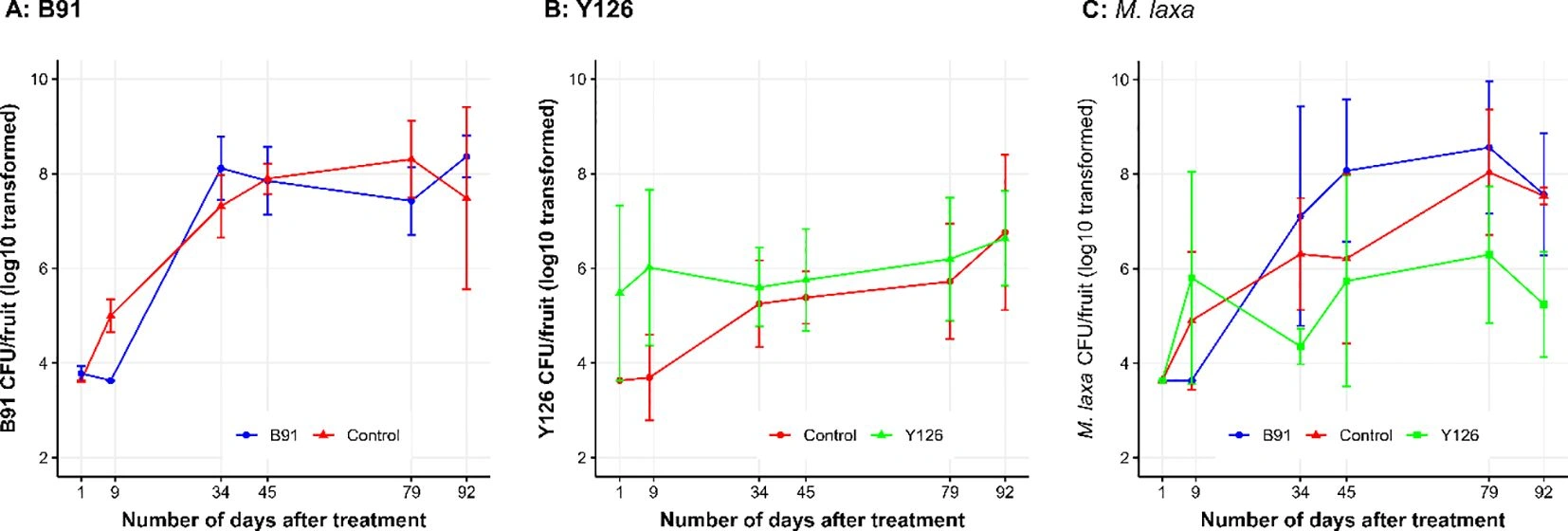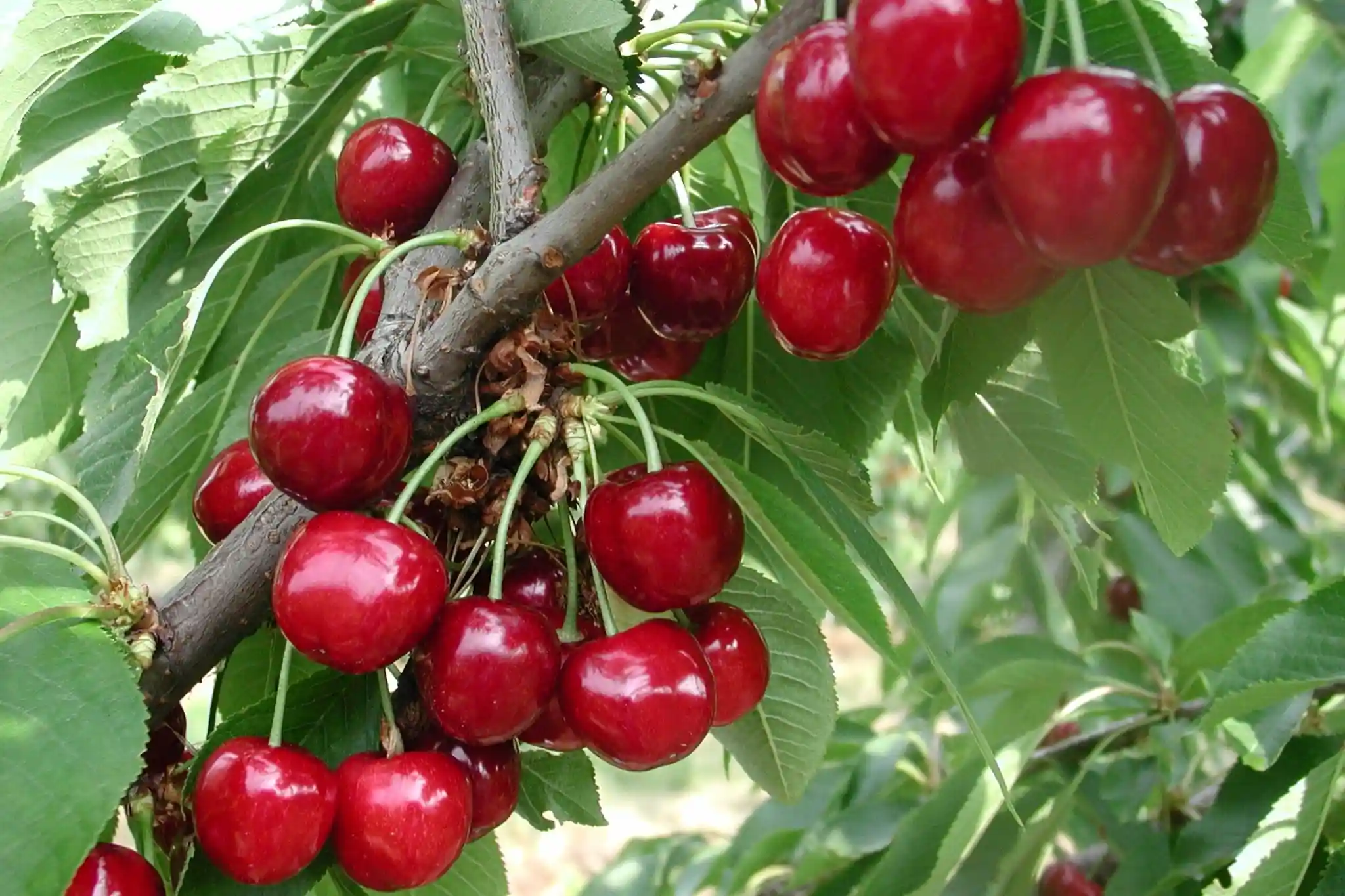Brown rot caused by Monilinia laxa is one of the main diseases affecting cherry trees in Europe. This fungus attacks flowers, branches, and both healthy and damaged fruits, compromising both the quantity and quality of production.
The control of this disease has traditionally relied on the use of fungicides, but their application today raises growing concerns, particularly environmental ones. In response to the need for more sustainable management methods, a recent study from the United Kingdom analyzed the effectiveness of two biological control agents (BCAs), Bacillus subtilis (strain B91) and Aureobasidium pullulans (strain Y126), in reducing the survival of Monilinia laxa on mummified fruits and in protecting flowers and fruits during the growing season.
Study methodology and initial findings
The study examined different phenological stages of the plant to understand the dynamics between antagonistic microorganisms and the pathogen. Autumn applications of the BCAs on mummified fruits initially led to a significant increase in microbial populations during the first 30 days, but this effect diminished over time, suggesting that a single application is not sufficient to ensure effective control throughout the winter.
However, it was observed that a prolonged interaction between BCA and pathogen on the mummified fruits, even at low temperatures, resulted in a greater reduction in M. laxa sporulation in the spring. Of the two BCAs, Y126 proved slightly more stable, although both Y126 and B91 showed limits in persistence.
Spring dynamics and effectiveness
During the spring phase, the ability of the BCAs to survive on flowers and counteract infection by M. laxa was evaluated. B91 declined rapidly after application, whereas Y126 maintained a stable presence for about two weeks.
When applied close to the time of pathogen inoculation, both BCAs effectively reduced the presence of the fungus on the flowers, although their efficacy diminished over time. Analyses conducted on mature fruits showed that none of the flowering-stage treatments (including fungicides) resulted in a significant reduction of M. laxa populations at harvest time.
This indicates that the effectiveness of BCAs is closely linked to application timing and the duration of their persistence on plant tissues.
 Figure 1. The log10 transformed viable population size of B91 (A), Y126 (B) and M. laxa (C) over time; biocontrol microbes (B91 and Y126), fungicide and distilled water (Control) were hand-sprayed onto blossoms in the spring 2019, and blossoms/fruits were sampled on six occasions for estimation of viable population sizes of B91, Y126 and M. laxa via the PMA-based qPCR method. On the last sampling day (92 days after application), fruits were ripe and ready for harvest. The error bars represent one standard error of individual observed mean.
Source: Bellamy et al., 2024.
Figure 1. The log10 transformed viable population size of B91 (A), Y126 (B) and M. laxa (C) over time; biocontrol microbes (B91 and Y126), fungicide and distilled water (Control) were hand-sprayed onto blossoms in the spring 2019, and blossoms/fruits were sampled on six occasions for estimation of viable population sizes of B91, Y126 and M. laxa via the PMA-based qPCR method. On the last sampling day (92 days after application), fruits were ripe and ready for harvest. The error bars represent one standard error of individual observed mean.
Source: Bellamy et al., 2024.
Strategic applications and conclusions
Applications made shortly before harvest, when the fruit is most susceptible, are essential to achieving a significant reduction in infections. Previous studies had shown that applying B91 and Y126 just before harvest can reduce post-harvest brown rot by up to 60%.
Therefore, the biocontrol strategy should include multiple and targeted interventions, particularly at three key moments: in winter to reduce overwintering inoculum, in spring to counter flower infections, and immediately before harvest to protect mature fruit.
In conclusion, the study confirms the potential of biological control agents (BCAs) as alternative tools to fungicides for managing cherry brown rot. However, the efficacy of such microorganisms strongly depends on their ability to stably colonize plant tissues and on the precision of application timing.
Moreover, the need for multiple interventions during the crop cycle and the variability associated with environmental conditions indicate that this is not yet a simple or definitive solution; therefore, further studies will be needed.
Nonetheless, the results represent a concrete step toward the biocontrol of Monilinia laxa and a consequent reduction in the use of synthetic fungicides.
Source: Bellamy, S., Shaw, M., & Xu, X. (2024). Using microbes to suppress overwintering inoculum of Monilinia laxa on mummified fruits and to protect cherry blossoms and fruit from infection. Frontiers in Horticulture, 3, 1504505. https://doi.org/10.3389/fhort.2024.1504505
Image source: UMN Extension
Andrea Giovannini
University of Bologna (ITA)
Cherry Times - All rights reserved













